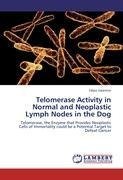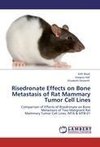
-
 Anglický jazyk
Anglický jazyk
Telomerase Activity in Normal and Neoplastic Lymph Nodes in the Dog
Autor: Fabio Valentini
One of the several differences between a normal and a neoplastic cell is that there is a physiological limit to the number of possible cell replications in the former, whereas it appears to be unlimited in the latter. For this reason, cancer cells are thought... Viac o knihe
Na objednávku
45.36 €
bežná cena: 50.40 €
O knihe
One of the several differences between a normal and a neoplastic cell is that there is a physiological limit to the number of possible cell replications in the former, whereas it appears to be unlimited in the latter. For this reason, cancer cells are thought to undergo a phenomenon of immortalization. The chromosome extremities contain structurally defined elements called telomeres. In normal somatic cells, each mitotic cycle leads to a reduction of telomere length until a critical point is reached. Telomere erosion to this critical length presents a signal for the cell to arrest further divisions and to undergo cellular senescence or to activate apoptosis. Telomeres that avoid critical shortening could, theoretically, replicate endlessly, thereby immortalizing the cell. One mechanism to restore telomere length is the activation of a specific reverse transcriptase called telomerase. Up-regulation of the telomerase enzyme provides immortalizing capacity to neoplastic cells.
- Vydavateľstvo: LAP LAMBERT Academic Publishing
- Rok vydania: 2012
- Formát: Paperback
- Rozmer: 220 x 150 mm
- Jazyk: Anglický jazyk
- ISBN: 9783659268496



 Nemecký jazyk
Nemecký jazyk 








